 This article forms the basis of a brochure, attached for download and printing, prepared by Roland Johnson for the Victorian and Tasmanian Branch of Sustainable Population Australia.
This article forms the basis of a brochure, attached for download and printing, prepared by Roland Johnson for the Victorian and Tasmanian Branch of Sustainable Population Australia.
‘The modern plague of over population is soluble by means we have discovered and with resources we possess. What is lacking is …universal consciousness of the gravity of the problem and the education of the billions of people who are its victims’. [1]
Photo: Martin Luther King, 1966 (revered symbol of human rights)
But powerful forces have opposed population control and the world’s population has more than doubled since 1966 to seven billion, with three billion desperately poor. Migration to rich countries is not a solution. Watch Roy Beck’s YouTube video , ‘World Poverty, Immigration and Gumballs’, to see why.
In the screenshot below, one gumball equals one million people; the tall jars represent the three billion poor. The wine glass holds five years’ migrant intake at one million a year (the current intake of the United States). Even if Australia took one million people a year (nearly four times our current intake) the numbers of the poor would continue to grow at around the rate of 80 million each year. [2] Besides, Australia’s immigrants are more middle class than poor.
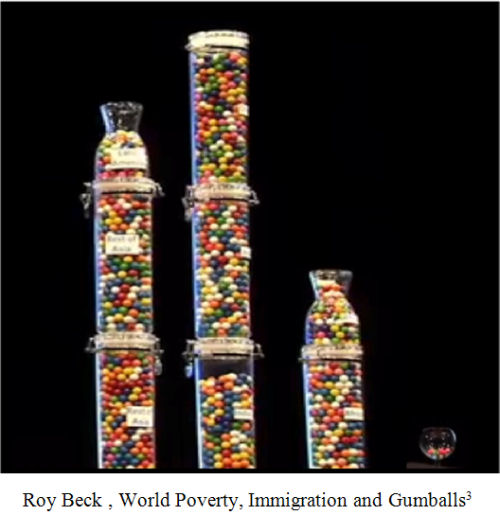
Poor people desperately need help where they are, including with family planning. We must stabilise our numbers, both nationally and globally. Currently the world is finding it difficult to feed all of the seven billion already here. [4] It won’t get easier if the global population grows to 9.75 billion or more by 2050. [5]
AUSTRALIA
From 2007-13 Australia’s net migration averaged over 230,000 p.a. which, added to an average annual natural increase of 157,000 p.a, meant growth of 387,000 p.a. and an annual growth rate of 1.8 per cent. [6] This is among the highest in the world. [7] It is destroying Australia’s ability to help the world’s poor and this growth will take us from 24 to 64 million in 2100. [8] It must stop some time.
WHY NOT NOW?
A sustainable Australian population
Australia’s total fertility rate (TFR) is around 1.9 per woman, [9] technically below replacement— 2.1. But the population is still youthful. So we would keep growing due to natural increase until 2046, leveling off at 26 million. A policy to stabilise our population closer to 26 million rather than 64 million is needed.

The growth lobby of big business, developers and media moguls is forcing Australia’s growth to be among the fastest in the world. Our total increase of 387,000 a year is more than the population of Canberra (381,488 in 2013). [11] This growth is against the wishes of 70 per cent of voters. [12] Our 1.8 per cent p.a. exceeds Canada’s high 1.2 per cent & NZ’s 0.8 per cent. [13]
The Immigration Department is overloaded
Immigration Department files reveal “…enforcement capacity has collapsed…nine in ten skilled migrant visas may be fraudulent …[investigation into] a Somali people - smuggling cell linked to a terror suspect … ceased due to a lack of resources’. [14]
Two thirds of new arrivals are on some kind of working visas, which are issued by licensed agents subject to rorting and bribes. Many visa holders, through a well understood system of visa churning, eventually gain permanent residency. [15]
Immigration policy can be changed. Around 80,000 people leave Australia permanently each year. This means that we could have a refugee intake of 20,000 p.a., plus other special cases, and achieve nil, or at least very low, net migration.
Economic Costs
Dr Jane O’Sullivan’s submission to the Productivity Commission, re ‘Public Infrastructure Report’ shows that each new person added to the Australian population costs taxpayers over $100,000 in infrastructure. [16]
“[P]opulation growth and ageing will affect labour supply, economic output, infrastructure requirements and government budgets… Total private and public investment requirements over this 50 year period [to 2060] are estimated to be more than 5 times the cumulative investment made over the last half century…”
[17] Building the equivalent of a new Canberra every year is not cheap.
The Federal Government is dominated by the growth lobby and State governments compete for the prestige of a higher population. They promote immigration and advertise for immigrants. They rezone prime agricultural land for housing. Local governments then increase rates, which forces the famers off the land. Local councils also convert pleasant suburban streets to high-rise ghettos to collect more rates. The costs of the extra services are paid for by existing tax- and rate-payers.
Choking Cities
‘Population growth is great for business but governments can’t keep up. Roads are clogged and public transport is groaning. The health and education systems can’t cope with demand’. [18]
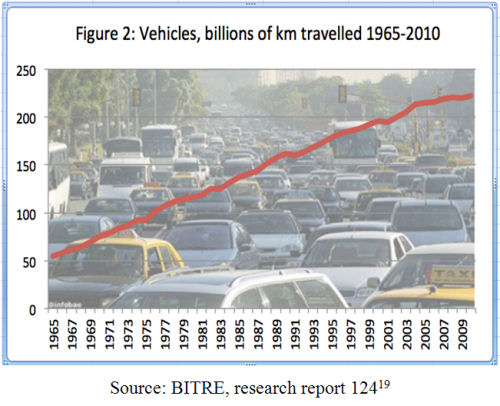
Employment
With many new workers and the loss of our manufacturing capacity, we are already unable to employ many of our young.
‘Between 2011 and 2014 the number of jobs increased by 400,000 but new migrants took 380,000. Some 240,000 more young Australians entered working age compared with those who retired, but they had to compete for only 20,000 extra jobs’. [20]
Agriculture
Australia looks big on the map but it’s an old, dry, infertile continent. Sprawling cities are taking some of our best land—land high on the two factors of good soil and reliable rainfall. (These are the areas shaded dark green on the map.) Much of Australia is marginal agricultural land (shaded yellow), and the greater part is unsuitable for any agriculture (shaded red).
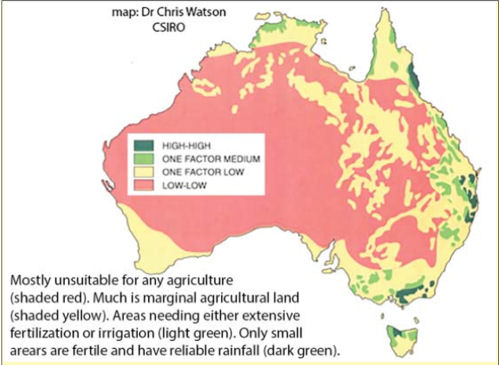
Australia might be able to feed a domestic population of 60 million for a while, but this would leave us without food for export to pay for imports. A sustainable population must stay below 30 million; over that we start to sink to third-world standards.
Climate Change
Climate change will badly affect Australia’s agriculture with reduced irrigation in the Murray-Darling Basin and marginal land becoming arid. The so-called inexhaustible Great Artesian Basin is now declining. The idea of Australia as the food bowl of Asia is a myth!
Minerals
Iron ore reserves were once thought to be almost inexhaustible. But all of the high grade, easily accessed mineral deposits in Australia have been mined out and energy consumption in mining has increased by 450 per cent in the last 40 years. [21] We are one of the world’s largest exporters of LNG, but this leaves little for the local market. [22] In order to find more, pressure for fracking access to coal-seam gas builds up. This risks polluting underground water and increasing food insecurity.
THE GROWTH LOBBY
While all Australians pay the cost of population growth, big business profits from it. Their self interest in growth is understandable. But it is unconscionable that politicians, most journalists and many academics support them. (See ‘How the Growth Lobby Threatens Australia’s Future’, James Sinnamon.) [23]
The growth lobby finds ways to silence its critics. In the USA the prestigious Sierra Club was given $100 million on the understanding that it would not continue to oppose the one million p.a. migrating to America. [24]
The slur of racism by the growth lobby has stifled the population debate.
BUT
Martin Luther King understood the cost of growth. Was he a racist?
‘I don't think slowing the rate of growth is blaming immigration or ethnic communities’
(Voula Messimeri, Chairwoman of the Federation of Ethnic Communities Councils of Australia). [25]
Immigrants also suffer the effects of population growth. Poor migrants suffer the most.
The lobby promotes the fear of an ageing population
But the Australian Bureau of Statistics reports that ‘Even large difference in the level of net immigration will have a relatively small impact on the age distribution’. [26]
Natural increase is still strong so our population would not decline without net migration. Immigration makes us bigger, not younger. Besides the aged contribute to society in many ways—ways worth billions of dollars. [27]
What about humanitarianism?
Australia’s policies serve the growth lobby, not the greater good. There is no virtue in luring away the best and brightest from poor nations. Australia poaches doctors and nurses from developing nations to service the huge rise in our population. We take about 1000 doctors and 2800 nurses a year. How many more come on temporary or 457 visas?
Most of Australia’s migrants come for economic reasons; this is no way to help the world’s poor. We should accept refuges and provide desperate women of the third world—who procreate even when their children are starving—with the means of family planning.
THE ENVIRONMENT
‘Instead of controlling the environment for the benefit of the population, perhaps it’s time we control the population to allow the survival of the environment’. [28]
Sir David Attenbourough (celebrated conservationist) 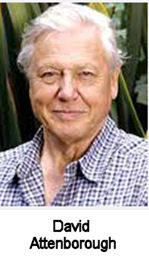
The World Wildlife Fund reported in 2014 that the world wildlife population had been halved between 1970 and 2010. The human population doubled in the same peroiod contributing directly to 82 per cent of the loss of wild life. [29]

We are already destroying the environment by overstocking our poor soils, habitat destruction and deforestation all of which causes soil loss and salination. We are doing this in 2015 to support nearly 24 million people. What would we do to support 64 million?
GLOBAL WARMING
Global warming is our greatest immediate threat and as Figure 3 shows, Greenhouse gases increase with the world’s population.

And Australia’s per capita emissions are the highest in the OECD. [31]
Our responsibility to other people, those now living and those yet to be born, and our responsibility to other species, all mean that Australia must curb its runaway population growth. The world must slow down and stabilise too.
Prepared by Roland Johnson for Sustainable Population Australia Vic/Tas.
www.population.org.au
This material is available in pdf form for downloading and printing here: Population Flyer cropped.pdf
References
[1] tp://en.wikiquote.org/wiki/Overpopulationaccessed 18 January 2015
[2] Roy Beck, < a href="https://www.youtube.com/watch?v=LPjzfGChGlE">World Poverty, Immigration and Gumballs The Population Reference Bureau’s annual World population data sheet shows a world population of 7.238 billion in mid 2014 and 1.137 billion in mid 2013, an estimated increase of 101 million people, 98 million of this increase in less developed countries. See www.prb.org
[3] Roy Beck, op. cit.
[4] Paddy Manning, ‘“Global” risks on food security mean us too’, The Age, 3 December 2011, p. 16
[5] The United Nations’ projections for 2050 include 9.746 billion (medium), 16.218 (medium high) and 24.834 billion (high).tp://www.un.org/esa/population/publications/longrange/longrangeExecSum.pdfaccessed 18 January 2015
[6] Data on growth calculated from the ABS, Demographic Statistics, Catalogue no. 3101.0 various issues. The average NOM for 2007 to 2013 was 237,000 pa and the average annual growth rate was 1.81 per cent
[7] See World Bank http://data.worldbank.org/indicator/SP.POP.GROW accessed 18 January 2015
[8] Projection series 20, published online with, Australian Bureau of Statistics (2013), Population Projections, Australia, 2012 (Base) to 2101, Catalogue no. 3222.0.
[9] The average total fertility rate from 2008-09 to 2013-14 was 1.9085. Calculated from ABS, Demographic Statistics, Catalogue no. 3101.0, June 2014, p. 39.
[10] See ibid.
[11] ABS, Demographic Statistics, July 2014, Catalogue no. 3101.0, p. 26
[12] Katharine Betts (2010), ‘A bigger Australia: opinions for and against’, People and Place 18(2), pp. 25-38
[13] World Bank data bank
[14] Nick McKenzie and Richard Baker, ‘Terror touches down’, The Age, 7 August 2014, pp. 1, 4.
[15] See Dr. R Birrell, Sydney Morning Herald online , 7 August 2014.

[16] Jane O’Sullivan (2014), ‘Submission to the Productivity Commission Inquiry into Infrastructure provision and funding in Australia’, p. 3 http://www.pc.gov.au/__data/assets/pdf_file/0004/135517/subdr156-infrastructure.pdf
[17] Productivity Commission (2013). An Ageing Australia: Preparing for the Future — Overview. Melbourne, Productivity Commission, p. 2
[18] Alan Kohler, ‘Healthcare and infrastructure spend tearing budget apart’, The Australian, 6 May 2014, p. 30
[19] Source: Department of Infrastructure and Transport, Bureau of Infrastructure and Transport, Road vehicle-kilometres travelled: estimated from state and territory fuel sales, Report 124, Canberra, Department of Infrastructure and Transport, 2011, pp. 372-3
[20] Bob Birrell and Ernest Healy (2014), Immigration and Unemployment in 2014,/em>. Monash University, Melbourne, Centre for Population and Urban Research
[21] Simon Michaux (2014) ‘The coming radical change in mining practice’ in Jenny Goldie and Katharine Betts (Eds) Sustainable Futures: Linking population, resources and the environment, CSIRO Publishing, Collingwood, Victoria, pp. 75-76
[22] See ‘Reform needed to minimise LNG export impact on manufacturers: report’, ,em>Gas Today, 24 July 2014 http://gastoday.com.au/news/reform_needed_to_minimise_lng_export_impact_on_manufacturers_report/088251/ accessed 25 November 2014
James Sinnamon, "How the growth lobby threatens Australia's future."
Kenneth R. Weiss, ‘The man behind the land’, Los Angeles Times 27 October 2004
Quoted in Mark O'Connor and William Lines (2008), Overloading Australia: How governments and media dither and deny on population, Envirobooks, Sydney, p. 145
ABS (2000), Projections of the Populations of Australia, States and Territories: 1999-2101, Catalogue no. 3222.0, p. 2
For more on the benefits (and costs) of demographic ageing see Katharine Betts (2014), The ageing of the Australian population: triumph or disaster?, Centre for Population and Urban Research, Monash University
http://en.wikiquote.org/wiki/David_Attenborough accessed 25 November 14
Living Planet Report 2014 accessed 25 November 2014
Population data are from United Nations Department of economic and social affairs http://esa.un.org/unpd/wpp/Excel-Data/population.htm ; Carbon emissions data are from Carbon Dioxide Information Analysis Centre (CDIAC)
The Garnaut Climate Change Review, Chapter 7, ‘Australia’s emissions in a global context’ 2008, updated in 2011 http://www.garnautreview.org.au/chp7.htm
 Right now the UK is politically divided on whether or not to leave the European Union and the mood in many quarters is ugly. It seems that there is a very strong chance that the forthcoming Brexit referendum could swing in favour of the Leave vote, something that seemed unimaginable a few years ago. The main reason for most people wanting to leave is because they are concerned with the UK’s rapid rate of population growth. This article is by Michael Bayliss (President of Sustainable Population Australia Victoria and Tasmania Branch) and Mark Allen (Population, Permaculture and Planning)
Right now the UK is politically divided on whether or not to leave the European Union and the mood in many quarters is ugly. It seems that there is a very strong chance that the forthcoming Brexit referendum could swing in favour of the Leave vote, something that seemed unimaginable a few years ago. The main reason for most people wanting to leave is because they are concerned with the UK’s rapid rate of population growth. This article is by Michael Bayliss (President of Sustainable Population Australia Victoria and Tasmania Branch) and Mark Allen (Population, Permaculture and Planning)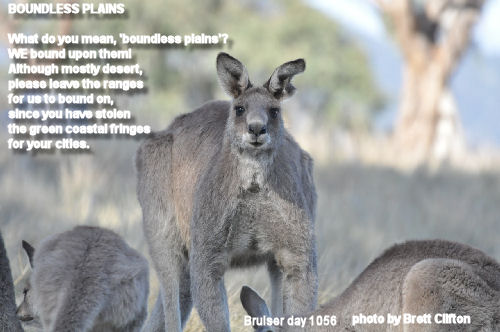

 Sunday 14 Feb 2016 at 12-12.30pm: Mark Allen of
Sunday 14 Feb 2016 at 12-12.30pm: Mark Allen of  Sunday 14 Feb 2016 at 12.30-1pm:
Sunday 14 Feb 2016 at 12.30-1pm:  Weekend of 7-8 March 2015: Sustainable Population Australia (SPA) - Australia’s only environment group campaigning on the impact of human population - will examine the question “Population and Ageing: Disaster or Triumph?” in a half-day symposium to be held in Adelaide. “Population and Ageing: Disaster or Triumph” will be held on Saturday, 7th March at 1 pm, at the Hawke Centre, UniSA West Campus, 55 North Terrace, Adelaide. The public is welcome to attend and admission is free.
Weekend of 7-8 March 2015: Sustainable Population Australia (SPA) - Australia’s only environment group campaigning on the impact of human population - will examine the question “Population and Ageing: Disaster or Triumph?” in a half-day symposium to be held in Adelaide. “Population and Ageing: Disaster or Triumph” will be held on Saturday, 7th March at 1 pm, at the Hawke Centre, UniSA West Campus, 55 North Terrace, Adelaide. The public is welcome to attend and admission is free.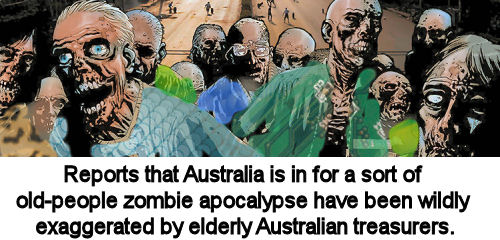 The SA-NT Branch President of SPA, Dr Michael Lardelli, says development lobby arguments for increased immigration to reduce the so-called problem of an ageing population will be taken apart. “For instance, the government likes to proclaim that the elderly will put huge pressures on the health system, but the truth is that whether a person lives to 50 or to 100 the last few months of their lives are likely to require more health resources. It really has little to do with age – the problem lies in treating chronic health problems for people of any age.”
The SA-NT Branch President of SPA, Dr Michael Lardelli, says development lobby arguments for increased immigration to reduce the so-called problem of an ageing population will be taken apart. “For instance, the government likes to proclaim that the elderly will put huge pressures on the health system, but the truth is that whether a person lives to 50 or to 100 the last few months of their lives are likely to require more health resources. It really has little to do with age – the problem lies in treating chronic health problems for people of any age.” This article forms the basis of a brochure,
This article forms the basis of a brochure, 







 Sustainable Population Australia (SPA) today called on the Federal Government to undertake a complete review of immigration into Australia in light of claims of widespread rorting of the system.
Sustainable Population Australia (SPA) today called on the Federal Government to undertake a complete review of immigration into Australia in light of claims of widespread rorting of the system. Videos of KELVIN THOMSON and all panel speakers have been added to this article. Open mic part now published here too. Today, June 14, 2014, a packed hall with people standing at the back in the Hawthorn Arts Centre voted for a national plebiscite to ask the people what size population they wanted. The forum interacted with a panel of four speakers: Kelvin Thomson, MP for Wills; Sheila Newman, Evolutionary Sociologist and Candobetter.net editor and writer; Clifford Hayes, former Bayside Council Mayor and planning activist; and William Bourke, Leader of the Sustainable Population Party. There was a queue for the open microphone and the meeting closed later than expected. All motions passed with an overwhelming show of hands.
Videos of KELVIN THOMSON and all panel speakers have been added to this article. Open mic part now published here too. Today, June 14, 2014, a packed hall with people standing at the back in the Hawthorn Arts Centre voted for a national plebiscite to ask the people what size population they wanted. The forum interacted with a panel of four speakers: Kelvin Thomson, MP for Wills; Sheila Newman, Evolutionary Sociologist and Candobetter.net editor and writer; Clifford Hayes, former Bayside Council Mayor and planning activist; and William Bourke, Leader of the Sustainable Population Party. There was a queue for the open microphone and the meeting closed later than expected. All motions passed with an overwhelming show of hands.
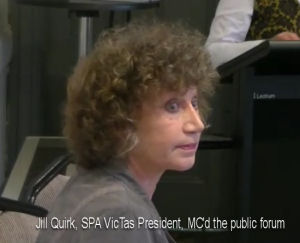

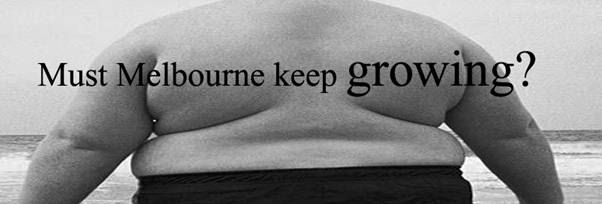
 Amid all the talk by politicians and media about the imminent horror budget with cuts to many important services, Treasurer Joe Hockey fails to see the source of more than enough money to cover all these ‘holes’, according to Sustainable Population Australia (SPA).
Amid all the talk by politicians and media about the imminent horror budget with cuts to many important services, Treasurer Joe Hockey fails to see the source of more than enough money to cover all these ‘holes’, according to Sustainable Population Australia (SPA).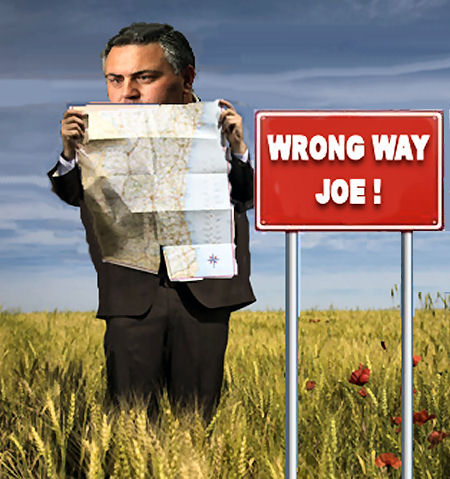
 The Abbott government’s reopening of a visa loophole in the temporary working visa (457) program is a retrograde step, according to Sustainable Population Australia (SPA).
The Abbott government’s reopening of a visa loophole in the temporary working visa (457) program is a retrograde step, according to Sustainable Population Australia (SPA).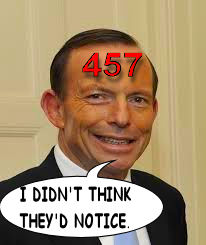 The Gillard government in 2013 had tightened the program to stop rorting by employers in the mining, construction and IT industries who knowingly hired hundreds more foreign workers than they had applied for.
The Gillard government in 2013 had tightened the program to stop rorting by employers in the mining, construction and IT industries who knowingly hired hundreds more foreign workers than they had applied for. 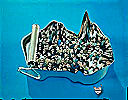 Australia’s population annual growth of just under 400,000 people is absolutely unsustainable, according to Sustainable Population Australia (SPA). Our annual population growth, of which 60% is made up of economic immigrants, amounts to building another Adelaide every three years, with all its need for infrastructure, fuel, housing ... at a cost of about $200,000 per person.
Australia’s population annual growth of just under 400,000 people is absolutely unsustainable, according to Sustainable Population Australia (SPA). Our annual population growth, of which 60% is made up of economic immigrants, amounts to building another Adelaide every three years, with all its need for infrastructure, fuel, housing ... at a cost of about $200,000 per person.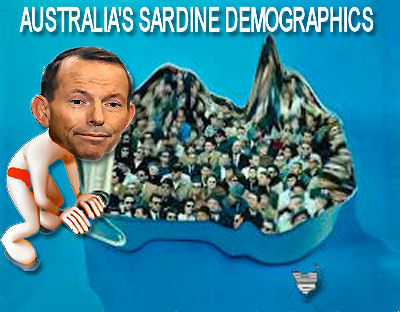 Figures out today from the Bureau of Statistics reveal Australia’s population grew at 1.8 per cent, with net overseas migration of 238,300 people (60%) in the year ending March 31, 2013, and natural increase of 159,100 people (40%).
Figures out today from the Bureau of Statistics reveal Australia’s population grew at 1.8 per cent, with net overseas migration of 238,300 people (60%) in the year ending March 31, 2013, and natural increase of 159,100 people (40%).  Sustainable Population Australia, Green Wedges Coalition, Protectors of Public Lands Victoria and Planning Backlash are four of the peak planning and environmental groups that have produced a Sustainable Population Charter for Victoria because the government seems unable to do so. It recommends that net overseas migration be reduced from the recent 232,000 immigrants in a year to 70,000 net per annum. See
Sustainable Population Australia, Green Wedges Coalition, Protectors of Public Lands Victoria and Planning Backlash are four of the peak planning and environmental groups that have produced a Sustainable Population Charter for Victoria because the government seems unable to do so. It recommends that net overseas migration be reduced from the recent 232,000 immigrants in a year to 70,000 net per annum. See 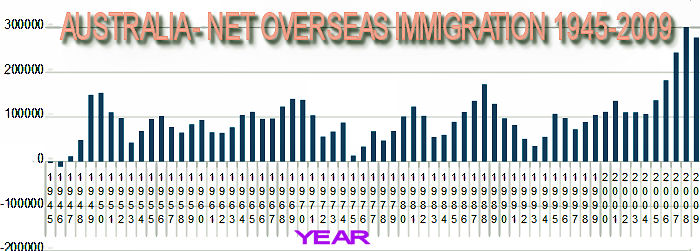
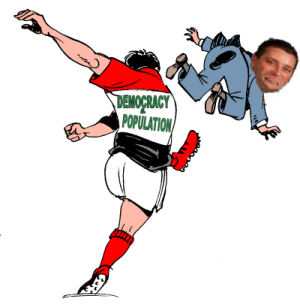

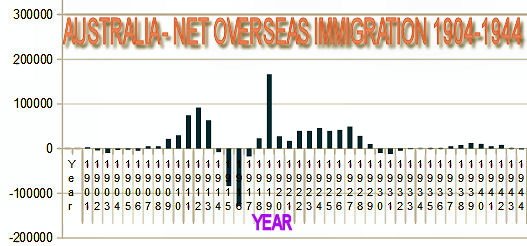

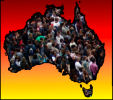 Groups representing thousands of Australians intend seeking meetings with Federal MPs to see where they stand on population growth and are calling for a referendum on the issues.
Groups representing thousands of Australians intend seeking meetings with Federal MPs to see where they stand on population growth and are calling for a referendum on the issues.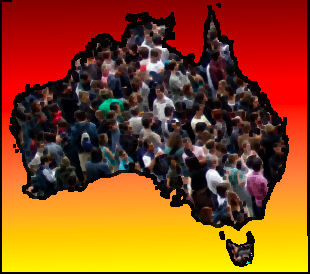 Peak environmental and planning groups in Victoria have cooperated to create a people’s Population Charter which says to the growth lobbyists “enough!”
Peak environmental and planning groups in Victoria have cooperated to create a people’s Population Charter which says to the growth lobbyists “enough!” 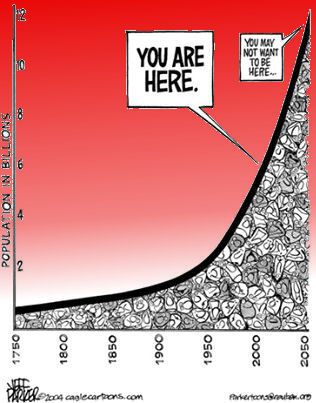
 July 30. The film will be introduced by Australian population scientist, Sheila Newman, (Demography, Territory, Law) who will also lead discussion afterwards. Grounded in the theories of social scientist Riane Eisler, the film strives not to blame but to educate, to highlight a different path for humanity. Overpopulation is merely a symptom of an even larger problem - a "domination system" that for most of human history has glorified the domination of man over nature, man over child and man over woman. To break this pattern, the film demonstrates that we must change our conquering mindset into a nurturing one. And the first step is to raise the status of women worldwide.
July 30. The film will be introduced by Australian population scientist, Sheila Newman, (Demography, Territory, Law) who will also lead discussion afterwards. Grounded in the theories of social scientist Riane Eisler, the film strives not to blame but to educate, to highlight a different path for humanity. Overpopulation is merely a symptom of an even larger problem - a "domination system" that for most of human history has glorified the domination of man over nature, man over child and man over woman. To break this pattern, the film demonstrates that we must change our conquering mindset into a nurturing one. And the first step is to raise the status of women worldwide.  The event is sponsored by Sustainable Population Australia and Arts in Action. You can find out more about it at www.artsinaction.com.au/mother-caring-for-7-billion. You can purchase tickets at the door or order them online. Tickets online are $7/$10 BF. At the door tickets will cost $12/$15.
The event is sponsored by Sustainable Population Australia and Arts in Action. You can find out more about it at www.artsinaction.com.au/mother-caring-for-7-billion. You can purchase tickets at the door or order them online. Tickets online are $7/$10 BF. At the door tickets will cost $12/$15.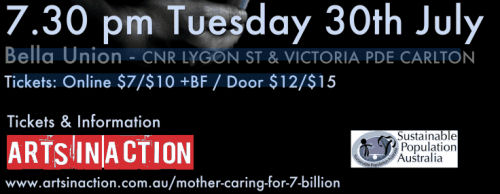
 Monash University's Dr. Bob Birrell of Monash University Centre for Population and Urban Research spoke at the Sustainable Population Australia AGM on July 20, 2013 to a conference center packed to standing room only. The speaker was retained for questions until long after the end of the talk. "It was chilling the way Dr Birrell calmly and factually revealed the deep globalised shit we are in. It just doesn’t make sense at all. If only the public understood what is being done to them and their children...not to mention our environment." Videos by Steven Armstrong.
Monash University's Dr. Bob Birrell of Monash University Centre for Population and Urban Research spoke at the Sustainable Population Australia AGM on July 20, 2013 to a conference center packed to standing room only. The speaker was retained for questions until long after the end of the talk. "It was chilling the way Dr Birrell calmly and factually revealed the deep globalised shit we are in. It just doesn’t make sense at all. If only the public understood what is being done to them and their children...not to mention our environment." Videos by Steven Armstrong.

 Everyone gets a smaller slice of the national cake and pays more for it. The arrival of Australia’s 23 millionth person tomorrow is no cause for celebration, according to Sustainable Population Australia (SPA).
Everyone gets a smaller slice of the national cake and pays more for it. The arrival of Australia’s 23 millionth person tomorrow is no cause for celebration, according to Sustainable Population Australia (SPA).

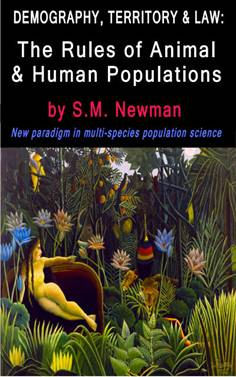
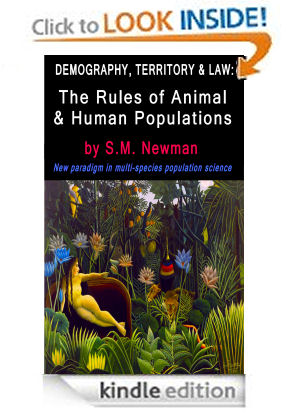
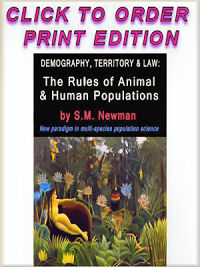
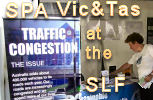 Once again members of the Victorian and Tasmanian Branch of Sustainable Population Australia braved the usual dreadful hot conditions at the Sustainable Living Festival in Melbourne, which has just come to an end.
Once again members of the Victorian and Tasmanian Branch of Sustainable Population Australia braved the usual dreadful hot conditions at the Sustainable Living Festival in Melbourne, which has just come to an end.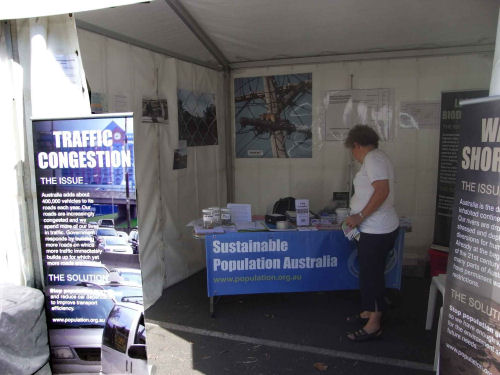
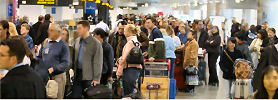 Sustainable Population Australia (SPA) has called on the new Immigration Minister, Brendan O’Connor, to heed the findings of a paper issued yesterday. It found that the number of migrants arriving in Australia since the beginning of 2011 who found jobs about equals the number of new jobs created in Australia for everyone over the same period.
Sustainable Population Australia (SPA) has called on the new Immigration Minister, Brendan O’Connor, to heed the findings of a paper issued yesterday. It found that the number of migrants arriving in Australia since the beginning of 2011 who found jobs about equals the number of new jobs created in Australia for everyone over the same period.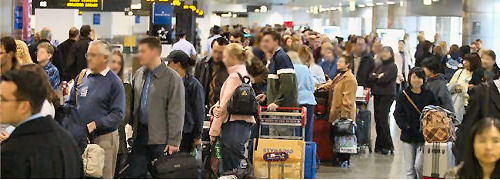 The paper was written by Professor Bob Birrell and Ernest Healy of the Centre for Population and Urban Research (CPUR), Monash University.
The paper was written by Professor Bob Birrell and Ernest Healy of the Centre for Population and Urban Research (CPUR), Monash University. 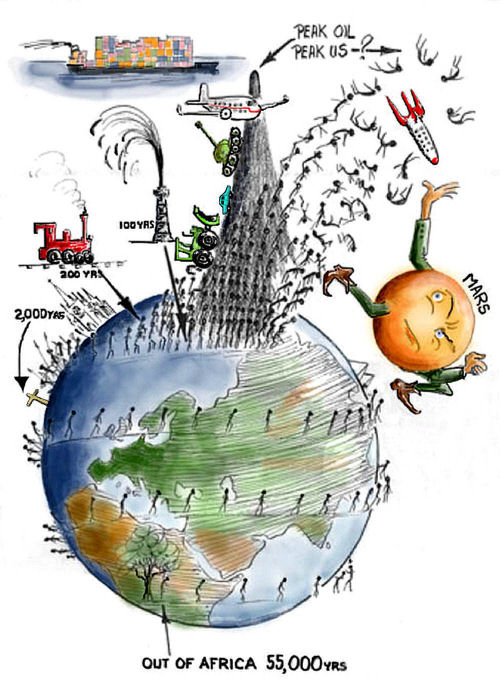
 Sandra Kanck gives her account of what preceded her 'expulsion' from the Australian Democrats over the matter of population policy. Sandra was an Australian Democrats member of the South Australian Legislative Council from 1993-2009 and the last Democrat member in elected government. When she retired she became the president of Sustainable Population Australia (SPA) and still is. The conflict in the Australian Democrats is a reflection of the greater conflict in Australia between the growth lobby and democratic representation and environmental democracy. As such it is important to people far beyond the Democrats themselves. (Article written by Sandra Kanck).
Sandra Kanck gives her account of what preceded her 'expulsion' from the Australian Democrats over the matter of population policy. Sandra was an Australian Democrats member of the South Australian Legislative Council from 1993-2009 and the last Democrat member in elected government. When she retired she became the president of Sustainable Population Australia (SPA) and still is. The conflict in the Australian Democrats is a reflection of the greater conflict in Australia between the growth lobby and democratic representation and environmental democracy. As such it is important to people far beyond the Democrats themselves. (Article written by Sandra Kanck).
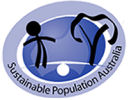 The environmental group at the centre of the controversy between its national president, Hon. Sandra Kanck, and the Australian Democrats has countered claims by those who expelled Ms Kanck that it is a political party.
The environmental group at the centre of the controversy between its national president, Hon. Sandra Kanck, and the Australian Democrats has countered claims by those who expelled Ms Kanck that it is a political party. Sustainable Population Australia takes the State of the Environment report 2008 as a warning of the unsustainable path that Victoria is on as the government recklessly engineers its population at a rate about twice the level it would naturally be at present. This state government and its predecessors have actively encouraged population growth through the artificial means of seeking increasing numbers of migrants from overseas to settle in Victoria, using the website
Sustainable Population Australia takes the State of the Environment report 2008 as a warning of the unsustainable path that Victoria is on as the government recklessly engineers its population at a rate about twice the level it would naturally be at present. This state government and its predecessors have actively encouraged population growth through the artificial means of seeking increasing numbers of migrants from overseas to settle in Victoria, using the website 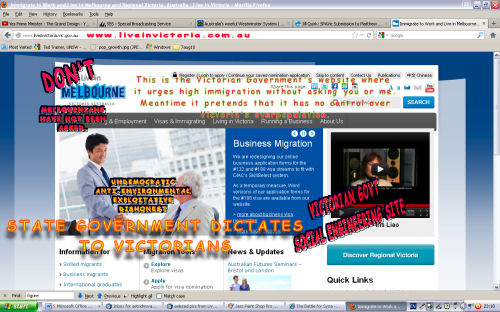
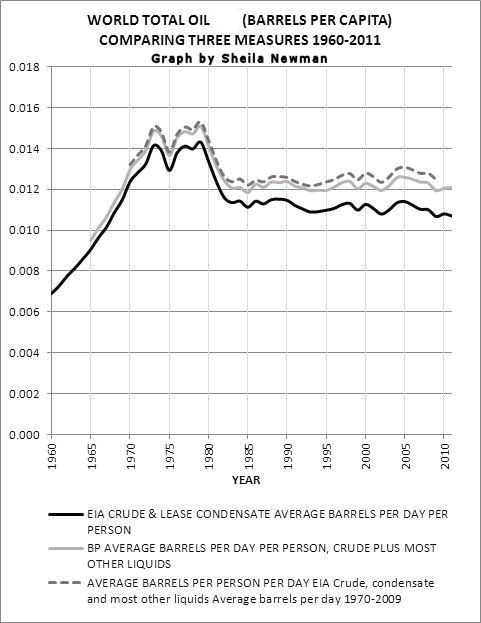
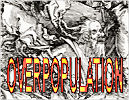 The Australian Bureau of Statistics reports the highest population growth rate since 2009. An 18 per cent increase in annual net overseas migration to 197,200 is responsible for the rise. Australia is entering a period of uncertainty for which we will be better prepared if we do not have to support ever more people - native born or immigrants. -- Sustainable Population Australia (SPA)
The Australian Bureau of Statistics reports the highest population growth rate since 2009. An 18 per cent increase in annual net overseas migration to 197,200 is responsible for the rise. Australia is entering a period of uncertainty for which we will be better prepared if we do not have to support ever more people - native born or immigrants. -- Sustainable Population Australia (SPA)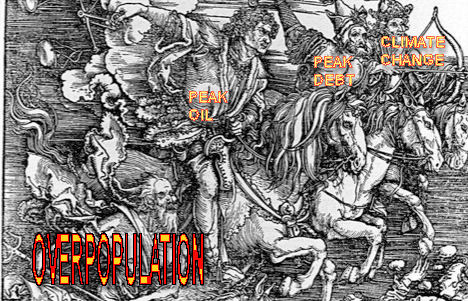
 Jill Quirk (President Sustainable Population Australia (SPA) Victorian and Tasmanian Branches, and National Representative) will host Dr Geoff Mosley to speak at the AGM, this Saturday, 7/7/2012, at 2PM. Dr Mosley was Executive Director of the Australian Conservation Foundation from 1973 to 1986 and is currently the Australian Director of the
Jill Quirk (President Sustainable Population Australia (SPA) Victorian and Tasmanian Branches, and National Representative) will host Dr Geoff Mosley to speak at the AGM, this Saturday, 7/7/2012, at 2PM. Dr Mosley was Executive Director of the Australian Conservation Foundation from 1973 to 1986 and is currently the Australian Director of the 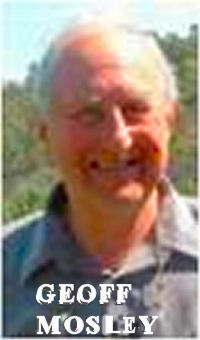

 Sustainable Population Australia is pleased to announce the auction of the 4 piece art work “Encroachment” by noted Kimberley artist and SPA member Jackie Ellis.
Sustainable Population Australia is pleased to announce the auction of the 4 piece art work “Encroachment” by noted Kimberley artist and SPA member Jackie Ellis.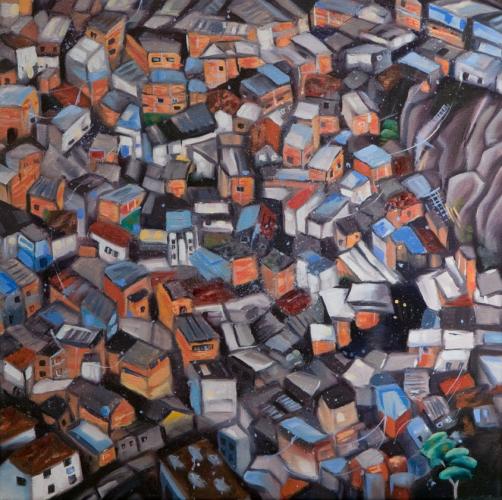
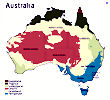 "Despite this grim picture, unlike global population growth, our own population future is very much under our control and we need not be overwhelmed. Stability of population numbers is within our reach this century. We owe it to Victorians who will be born 50 years from now to take control so that those who come after us can enjoy what we have enjoyed – clean air and water and reliable food and housing supplies. To do nothing is the real crime against humanity." Jill Quirk, President, Sustainable Population Australia (SPA) Victoria.
"Despite this grim picture, unlike global population growth, our own population future is very much under our control and we need not be overwhelmed. Stability of population numbers is within our reach this century. We owe it to Victorians who will be born 50 years from now to take control so that those who come after us can enjoy what we have enjoyed – clean air and water and reliable food and housing supplies. To do nothing is the real crime against humanity." Jill Quirk, President, Sustainable Population Australia (SPA) Victoria.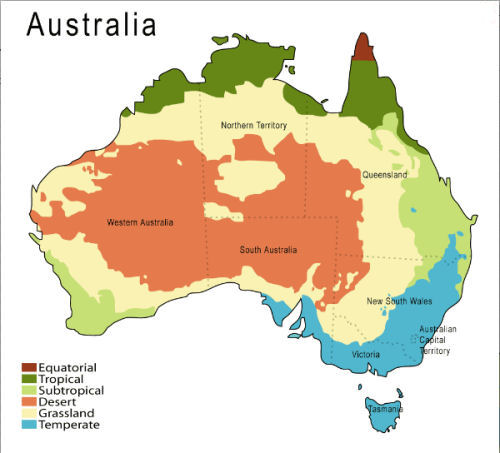
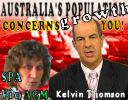 Melbourne people can hear MP Hon. Kelvin Thomson speak at the A.G.M. of Sustainable Population Australia (Victorian branch) on July 16th at 2.00p.m. The topic will be, "The population issue in Australia - post Population Strategy." The title refers to Minister Burke's recent "Population Strategy." In this article we talk about why this meeting is so important for Victorians and Australians and discuss events leading up to it, from Barry Jones's Australia's Population Carrying Capacity Inquiry (1994), through the Bracks Population Summit (2002) and Tony Burke's "Population Strategy" (2011). We at http://candobetter.net hope that subsequent events in Victoria will maintain and support SPA Vic's promotion of a better population policy for Australia. (Inside: Link to Steve Vizard's surprisingly good program contrasting Jones Report with Burke Report.)
Melbourne people can hear MP Hon. Kelvin Thomson speak at the A.G.M. of Sustainable Population Australia (Victorian branch) on July 16th at 2.00p.m. The topic will be, "The population issue in Australia - post Population Strategy." The title refers to Minister Burke's recent "Population Strategy." In this article we talk about why this meeting is so important for Victorians and Australians and discuss events leading up to it, from Barry Jones's Australia's Population Carrying Capacity Inquiry (1994), through the Bracks Population Summit (2002) and Tony Burke's "Population Strategy" (2011). We at http://candobetter.net hope that subsequent events in Victoria will maintain and support SPA Vic's promotion of a better population policy for Australia. (Inside: Link to Steve Vizard's surprisingly good program contrasting Jones Report with Burke Report.)
 SPA Population Film Festival - Brisbane Sunday 4 June 2011, Event supported by The Stable Population Party Australia. Details below.
SPA Population Film Festival - Brisbane Sunday 4 June 2011, Event supported by The Stable Population Party Australia. Details below.
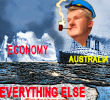 The government has ignored the environmental submission to the sustainable population strategy public consultation, (led by Terry Burke MP), says former senator Sandra Kanck, who is president of Sustainable Population Australia.
The government has ignored the environmental submission to the sustainable population strategy public consultation, (led by Terry Burke MP), says former senator Sandra Kanck, who is president of Sustainable Population Australia.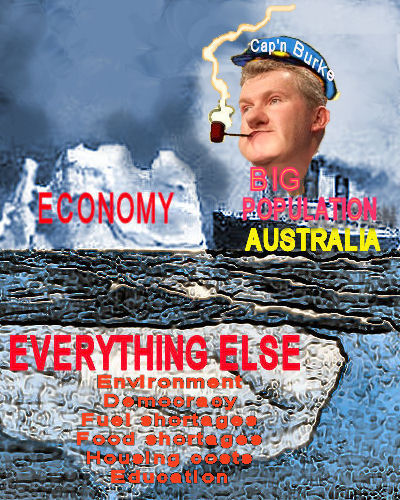 The results of the Government’s
The results of the Government’s
Recent comments